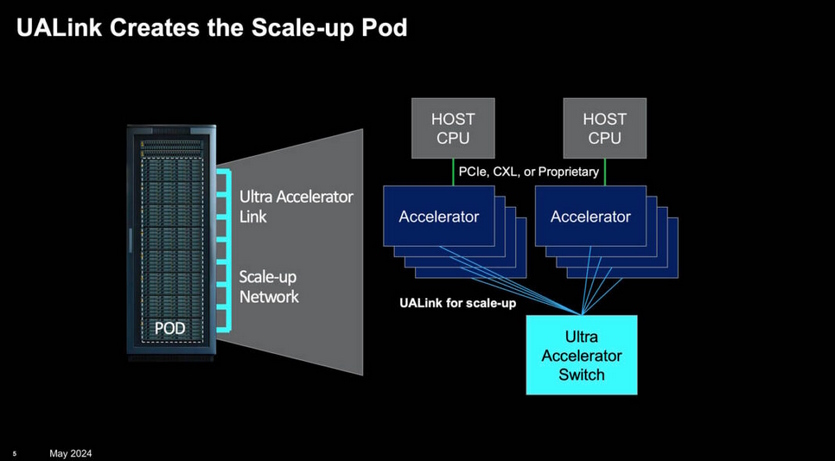Nvidia NVLink technology has been a game-changer in enabling high-speed communication between GPUs and CPUs since its debut in 2014. Surpassing traditional connection standards that have become inadequate for today's high-performance accelerators, it started off being used in gaming GPUs. That's not the case anymore, as Nvidia has removed the technology from mainstream and workstation products, limiting its usage to data centres and HPC.
Efficient communication is crucial in data centres housing large clusters of accelerators. Servers require effective networking and intercommunication mechanisms, particularly when multiple GPUs are used on the same server. The most recent iteration, NVLink 5.0, comes out with Blackwell and Grace CPUs and represents a significant advancement, doubling the bandwidth over 4.0 from 100 Gbit/s to 200 Gbit/s.

With NVLink being used exclusively by Nvidia products, the rest of the industry had to develop an alternative. AMD, Intel, Google, Microsoft, Meta, and others have created a new open-source communication standard called UALink that could rival NVLink for scaling up AI applications in data centres.
According to the press release, the first standard (1.0) aims to facilitate communication between up to 1024 accelerators in a single computing pod and the connected memory, which includes GPUs. However, details regarding the maximum bandwidth are currently unavailable. The UALink Consortium is scheduled to be established in Q3 2024, and the 1.0 specifications will be available in the same quarter.
Discuss on our Facebook page, HERE.
KitGuru says: Could UALink come to mainstream and workstation products?
 KitGuru KitGuru.net – Tech News | Hardware News | Hardware Reviews | IOS | Mobile | Gaming | Graphics Cards
KitGuru KitGuru.net – Tech News | Hardware News | Hardware Reviews | IOS | Mobile | Gaming | Graphics Cards


